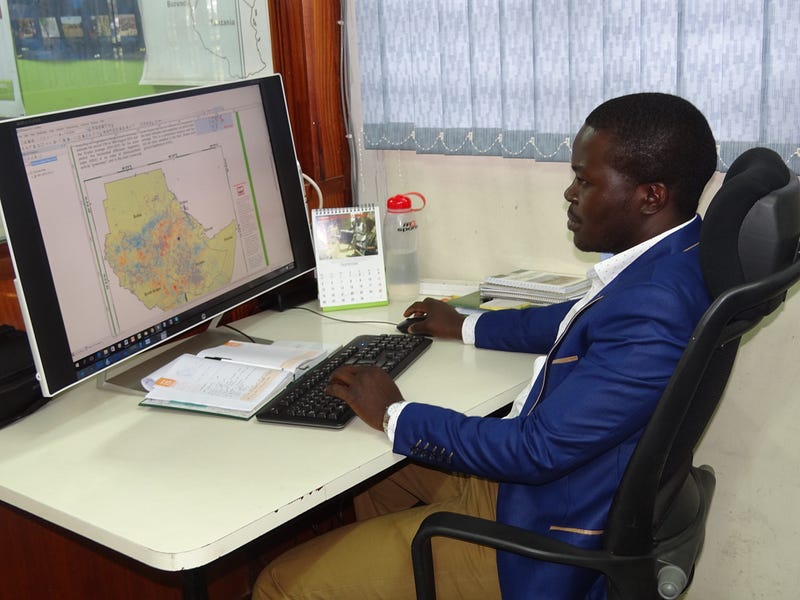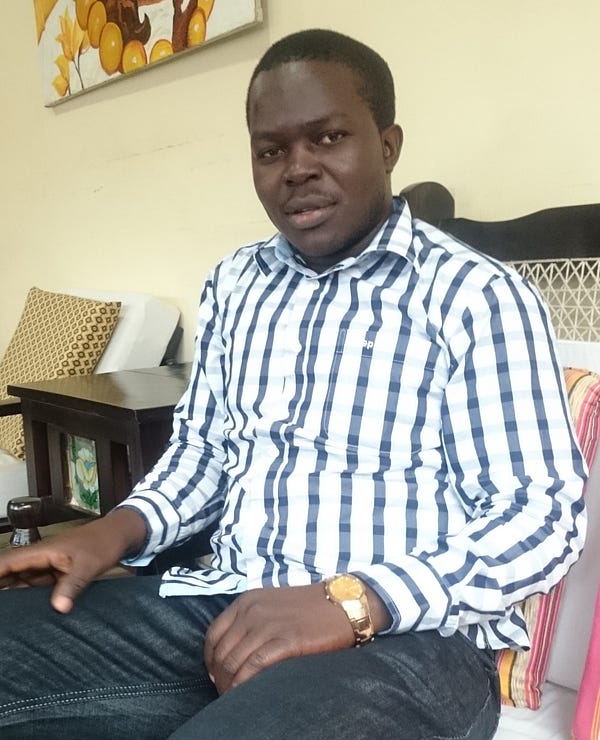When Mr.Jully Odhiambo Ouma was recommended by his director to attend the UNITAR training on Geographic Information Systems (GIS), he was a Master Degree student in Meteorology at the University of Nairobi, Kenya and a research assistant at Climate Prediction & Applications Centre (ICPAC) within the Intergovernmental Authority on Development (IGAD). At that time, he was making meteorological prediction maps about the probability amounts of rain, using a basic graphic software. The probabilities were presented in a way that was often difficult for local farmers and cattle herders to use effectively.

The training that Mr. Ouma attended was part of an integrated training programme, organized by UNITAR and ICPAC, aimed specifically at developing the Disaster Risk Reduction capacity of 11 ICPAC member countries in Central and Eastern Africa. These trainings were designed to assist IGAD and ICPAC member countries with issues including the generation of printed and online real-time diverse risk maps involving rainfall hazard, flood and food security.
“I was relatively unfamiliar with GIS before the first introductory two-week training.” Mr. Ouma admitted.
“At first the GIS training was completely new to me and the first week was a big challenge. But after the introduction, with practice, I felt at pace with everything I was learning by the second part of training.”
After completing the course, he went on to complete 3 additional UNITAR-ICPAC trainings in remote sensing, advanced GIS as well as a refresher course.
In December 2014, after graduating with his Master’s Degree, Mr. Ouma was given the opportunity to work for ICPAC as a GIS assistant. “I credit UNITAR for my new job. I wouldn’t have been offered the job without the GIS training.” “In fact,” he continued “I was told that I was the best performing student in the training and that’s why I was offered the job at ICPAC as a GIS assistant.”

Along with personal growth, Mr. Ouma has also brought an increased capacity to the ICPAC institution with new skills, which have already directly benefited to the people of Kenya. He explained, “Instead of the old method of information sharing, I now use technologically advanced tools to convert probability of precipitation to actual rainfall amounts for specific areas, and that final output is put into GIS maps with which farmers can interact and understand.”
This not only leads to better harvests of crops, but also improved use of grazing lands for cattle, one of the region’s main economic drivers.
“With these improvements, I also hope to bring some peace to the farmers who, in the past, have clashed violently over water access, grazing lands, and road use for livestock movement.”
In order to bring these changes, he continues his studies in GIS, working on a PhD. In the meantime, he has already become a regional GIS trainer for an introductory skill courses for several IGAD member states organizations and students. His group has also created a template for disaster and vegetation analysis, which hadn’t been done before. These maps can be printed in high resolution at a large scale for people to more easily analyze and use the data. Mr. Ouma said, “My department is even becoming known as a data hub with people from around the region coming to my institution to search for information. University of Nairobi Professors are also sending students to me for remote sensing analysis for school projects.”
Mr. Ouma is always looking into the future for other possible UNITAR trainings including remote sensing analysis, disaster management and Python programming language to develop smartphone apps for community data sharing and analysis as well as a mobile lab to help teach farmers how to share information to improve future data collection. “I would also like to develop local capacity for the UNITAR Geoportal tool for easy data sharing.” He continued, “If the farmers had the capacity to do it for themselves, they could solve our region’s own problems.”

